The U.S.S. Olympia is one of the two surviving ships of the era of the vertical reciprocating steam engine. The Cruiser Olympia, launched in 1892, was one of the first naval ships to be built with these engines. As part of the new American steel Navy, the construction of the Olympia was authorized in 1888 as cruiser number 6. As part of a Congressionally-mandated program to establish complete domestic capability for warship construction, the ship's contract was awarded to the Union Iron Works of San Francisco.
Navy
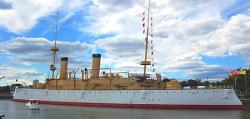
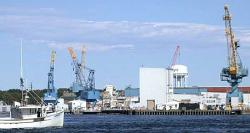
The Portsmouth Navy Yard is a United States Navy shipyard in Kittery on the southern boundary of Maine near the city of Portsmouth, New Hampshire. Founded in 1800, PNS is U.S. Navy's oldest continuously operating shipyard. Today, most of its work concerns the overhaul, repair, and modernization of submarines. he Portsmouth Naval Shipyard was established on June 12, 1800, during the administration of President John Adams.
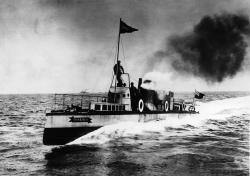
The Turbinia was the world's first turbine-driven ship. It attracted worldwide attention at the 1897 Spithead Naval Review by traveling more than 34 knots. This remarkable performance accelerated the acceptance of the steam turbine as an alternative to the steam reciprocating engine on ships as well as for central electric light and power stations. Sir Charles A. Parsons (1854-1931) invented (1884), developed, and promoted the steam turbine, as well as the design of the Turbinia. For this, he is considered among the outstanding technological innovators of all time.
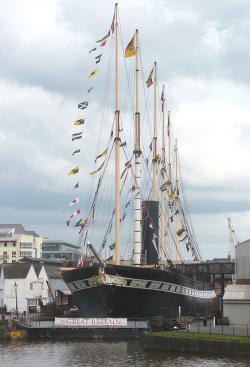
The innovative SS Great Britain, launched in 1843, was the first iron-hulled, screw-propelled ship to cross any ocean and led mercantile history into British domination in the late nineteenth century. Standard practice of naval and merchant ship construction derived from this ship. The compartmented hull, unprecedented 1,500-horsepower engine with chain drive, and many other seminal features were the designs of Isambard Kingdom Brunel. New design features included a balanced rudder, an electric log, a double bottom, and water-tight bulkheads.
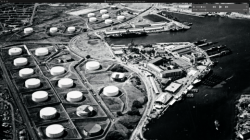
Conceived in the early years of World War II as a plan to bury four fuel containers horizontally in a hillside at the U.S. Navy facility at Pearl Harbor, Hawaii, the Red Hill Underground Fuel Storage Facility ultimately encompassed the design and construction of 20 vertical storage tanks - each large enough to contain a 20-story building - buried in the volcanic hillside and connected by tunnels to a harbor-side pumping station more than two-and-a-half miles away.
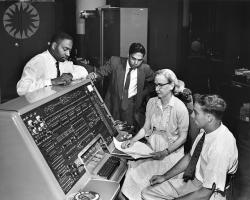
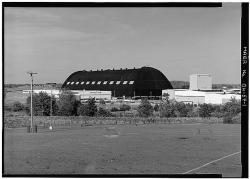
Wind dynamics were a major consideration in building such a huge structure. When winds blow against the building, they are deflected up over the roof, creating a partial vacuum that can draw the roof up with a force several times greater than the direct force of the wind. Wind tunnel testing on a model helped designers decide that a semi-parabolic shape would best resolve air current concerns.
The Wildcat's innovative "Sto-Wing" mechanism developed on the XF4F-4 prototype by Leroy (Roy) Grumman (1895-1982), a founder of Grumman Aircraft Engineering Corporation, was crucial to the U. S. Navy's success during World War II.
The idea of a folding wing was not new: as early as 1920, F.M. Osborne patented a high-wing monoplane with folding wings, but never produced this design. A 1928 plane with folding wings designed by W. Leonard Bonney crashed on its first flight.
Innovations
The Wildcat's innovative "Sto-Wing" mechanism developed on the XF4F-4 prototype by Leroy (Roy) Grumman (1895-1982), a founder of Grumman Aircraft Engineering Corporation, was crucial to the U. S. Navy's success during World War II.
The idea of a folding wing was not new: as early as 1920…
Read More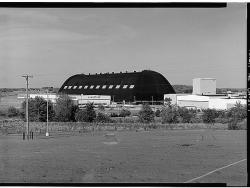
Wind dynamics were a major consideration in building such a huge structure. When winds blow against the building, they are deflected up over the roof, creating a partial vacuum that can draw the roof up with a force several times greater than the direct force of the wind. Wind tunnel testing on…
Read More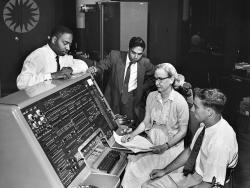
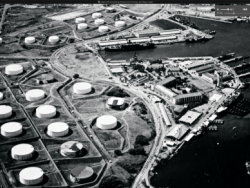
Conceived in the early years of World War II as a plan to bury four fuel containers horizontally in a hillside at the U.S. Navy facility at Pearl Harbor, Hawaii, the Red Hill Underground Fuel Storage Facility ultimately encompassed the design and construction of 20 vertical storage tanks - each…
Read More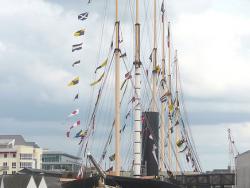
The innovative SS Great Britain, launched in 1843, was the first iron-hulled, screw-propelled ship to cross any ocean and led mercantile history into British domination in the late nineteenth century. Standard practice of naval and merchant ship construction derived from this ship. The…
Read More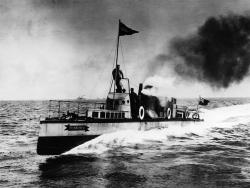
The Turbinia was the world's first turbine-driven ship. It attracted worldwide attention at the 1897 Spithead Naval Review by traveling more than 34 knots. This remarkable performance accelerated the acceptance of the steam turbine as an alternative to the steam reciprocating engine on ships as…
Read More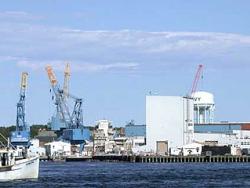
The Portsmouth Navy Yard is a United States Navy shipyard in Kittery on the southern boundary of Maine near the city of Portsmouth, New Hampshire. Founded in 1800, PNS is U.S. Navy's oldest continuously operating shipyard. Today, most of its work concerns the overhaul, repair, and modernization…
Read More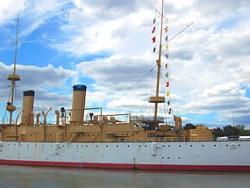
The U.S.S. Olympia is one of the two surviving ships of the era of the vertical reciprocating steam engine. The Cruiser Olympia, launched in 1892, was one of the first naval ships to be built with these engines. As part of the new American steel Navy, the construction of the Olympia was…
Read More

